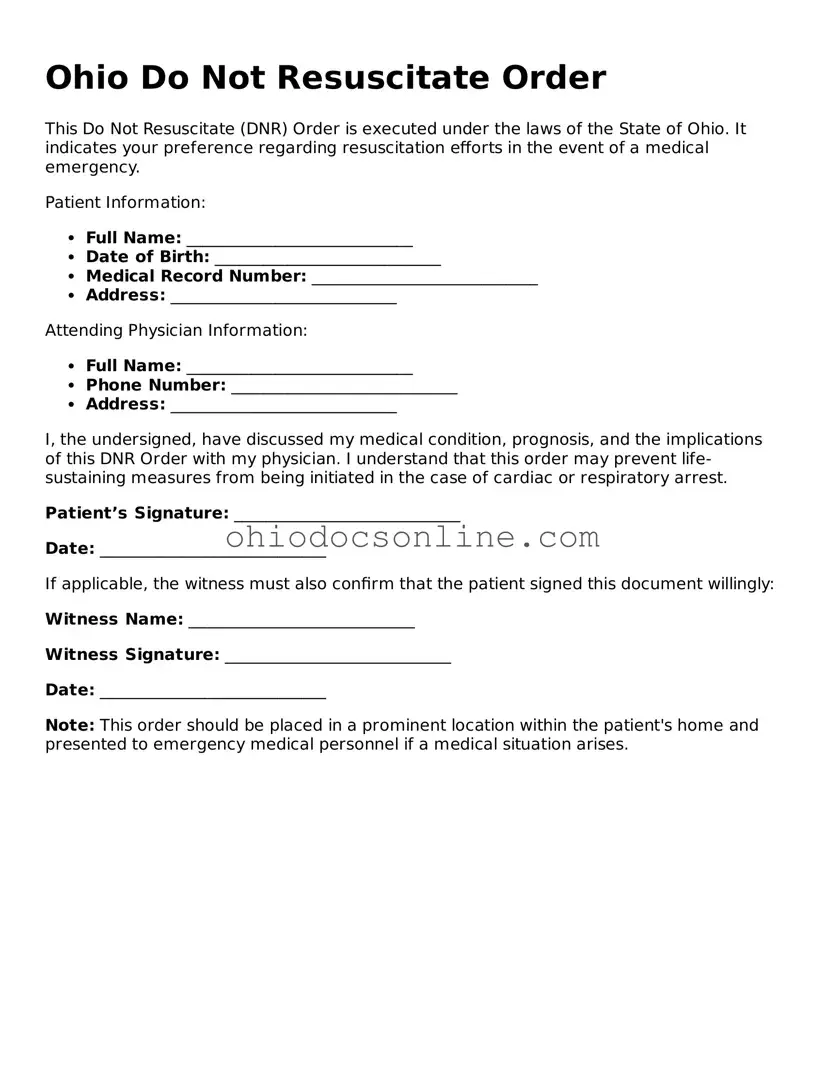Printable Do Not Resuscitate Order Template for Ohio
A Do Not Resuscitate (DNR) Order form in Ohio is a legal document that allows individuals to refuse resuscitation efforts in the event of cardiac or respiratory arrest. This form ensures that a person's wishes regarding end-of-life care are respected by medical professionals. Understanding the implications of this document is essential for anyone considering their healthcare options.
Open Editor
